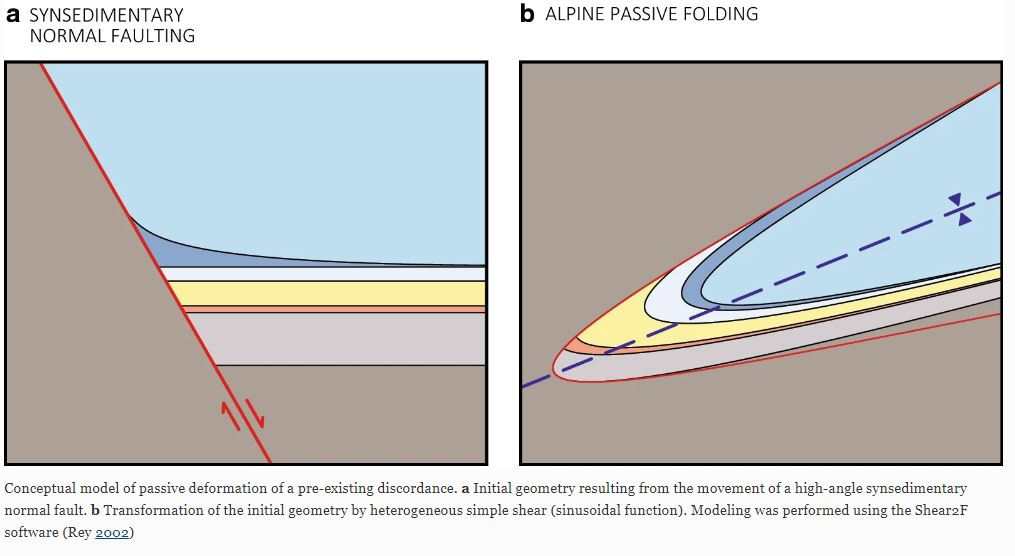Mimicking Alpine thrusts by passive deformation of synsedimentary normal faults: a record of the Jurassic extension of the European margin (Mont Fort nappe, Pennine Alps)
Authors: Adrien Pantet, Jean-Luc Epard, Henri Masson
ABSTRACT
The Mont Fort nappe, former uppermost subunit of the Grand St-Bernard nappe system, is an independent tectonic unit with specific structural and stratigraphic characteristics (Middle Penninic, NW Italy and SW Switzerland). It consists in a Paleozoic basement, overlain by a thin, discontinuous cover of Triassic-Jurassic metasediments, mainly breccias, called the Evolène Series. The contact of this Series over the Mont Fort basement is debated: stratigraphic or tectonic? We present new observations that support the stratigraphic interpretation and consequently imply that the Evolène Series belongs to the Mont Fort nappe. We moreover show that the Mont Fort nappe was strongly affected by normal faulting during Jurassic. These faults went long unnoticed because Alpine orogenic deformation blurred the record. Alpine strain erased their original obliquity, causing confusion with an Alpine low-angle thrust. These Jurassic faults have been passively deformed during Alpine tectonics, without inversion or any other kind of reactivation. They behaved like passive markers of the Alpine strain. Detailed field observations reveal the link between observed faults and specific breccia accumulations. Areas where the Evolène Series is missing correspond to sectors where the fault scarps were exposed on the bottom of the sea but were too steep to keep the syn- to post-faulting sediments. The Mont Fort nappe thus represents an example of a distal rifted margin. The succession of synsedimentary extensional movements followed by orogenic shortening generated a situation where passively deformed normal faults mimic an orogenic thrust.

Article publié dans le Swiss Journal of Geosciences et disponible en libre accès ici.